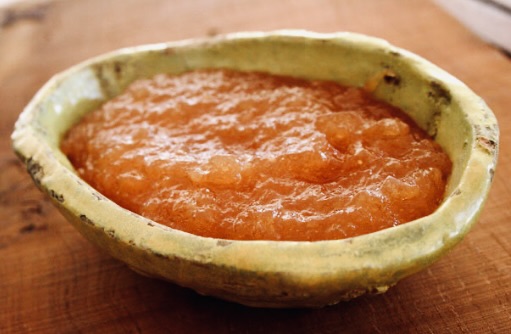Quince Cheese or Paste Sicilian Version
Cotognata” is a traditional Sicilian sweet jelly made from quince, a fruit native to Iran, Turkey, possibly Greece, and the Crimean peninsula. The recipe for cotognata was influenced by Spain and is also popular in different regions such as Portugal, Israel, and Latin America.
Historically, food preservation was crucial, and the sun was the primary tool used in the South for drying food, reducing humidity, and extending expiration dates. During autumn, in Sicily, it is customary to prepare mostata and cotognata, which are then enjoyed until the Christmas holidays.
On the Day of the Dead, it was a common practice in Sicily to gift cotognata to children as a sweet way to remember loved ones who have passed away. This sweet treat is similar to jelly but has a denser consistency and a long shelf life. Ancient recipes for this fruit can be found in Columella’s book “De re rustica,” dating back to a time when the fruit was essentially preserved raw with honey. Around 1600, quince began to be used as a preserve, added to must, and the method of preparing jams was standardized with the introduction of granulated sugar in the kitchen. Sicilian cotognata is left to dry in small popular ceramic forms, allowing it to be stored at room temperature and enjoyed in pieces.
The preparation
The preparation of Sicilian cotognata differs in some details from the “classic” method. In this case, a quince jam is prepared by peeling the fruits and cooking only the pulp with lemon. What makes Sicilian cotognata unique is also the mold in which it is left to dry: typically, molds decorated with flowers, fruits, or other symbols representative of the region are used. The tradition of creating and using these molds has been an integral part of Sicilian culinary history, with many of these traditional forms still being found in second-hand markets across Sicily. These molds are not only functional but also serve as a testament to the enduring legacy of Sicilian culinary traditions. They are cherished as collectibles, reflecting the deep-rooted connection between Sicilian culture and its culinary practices

